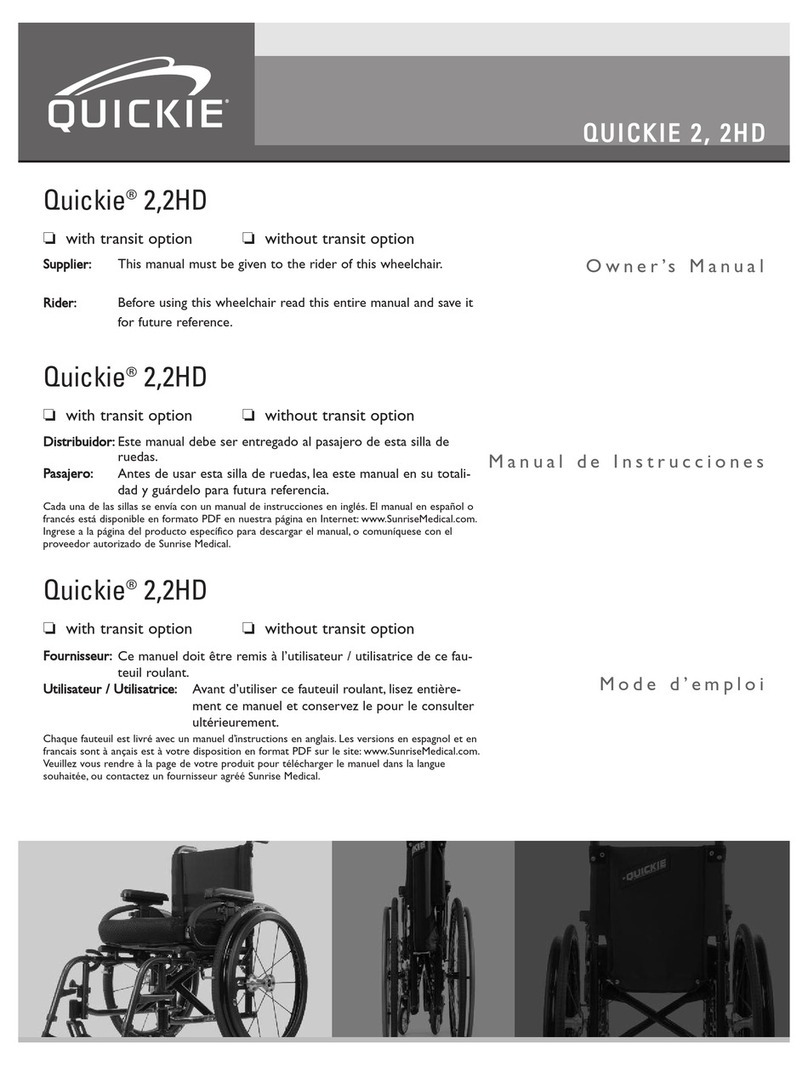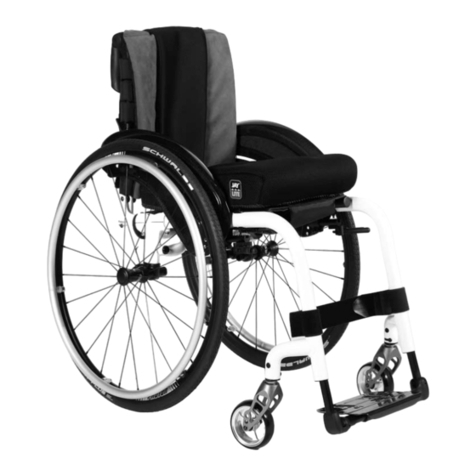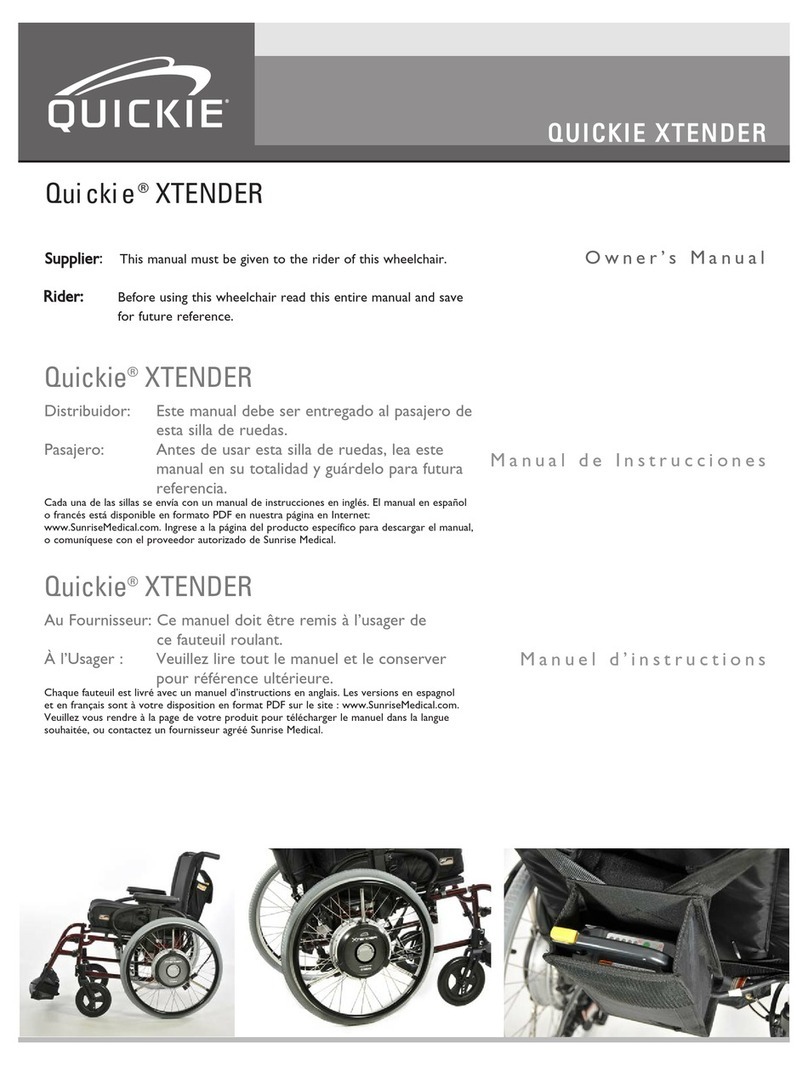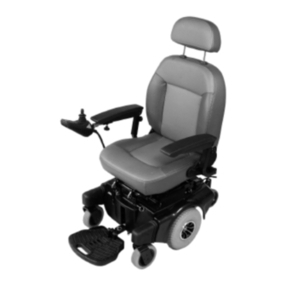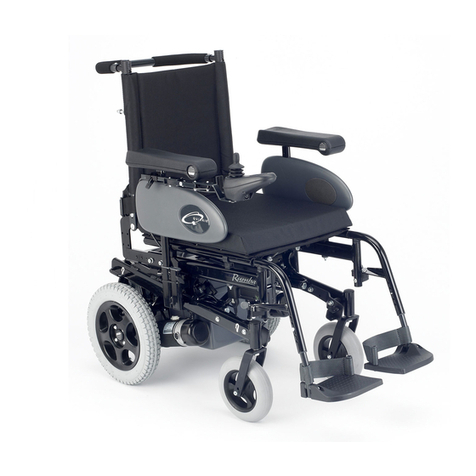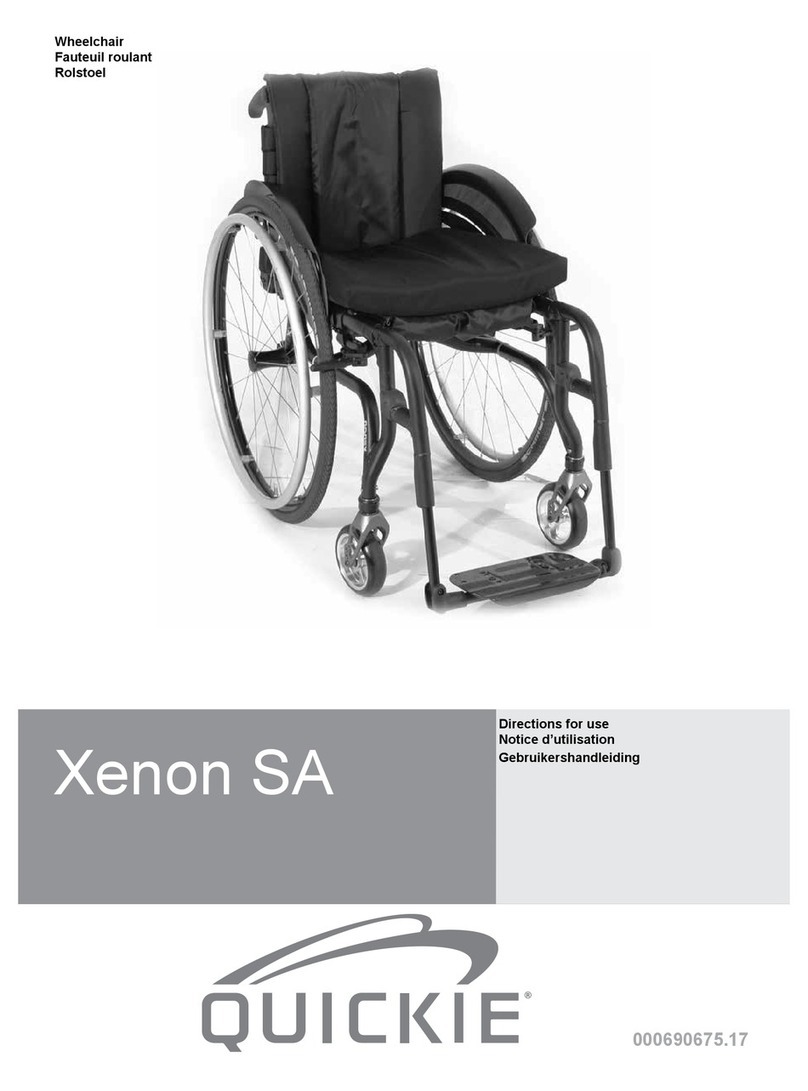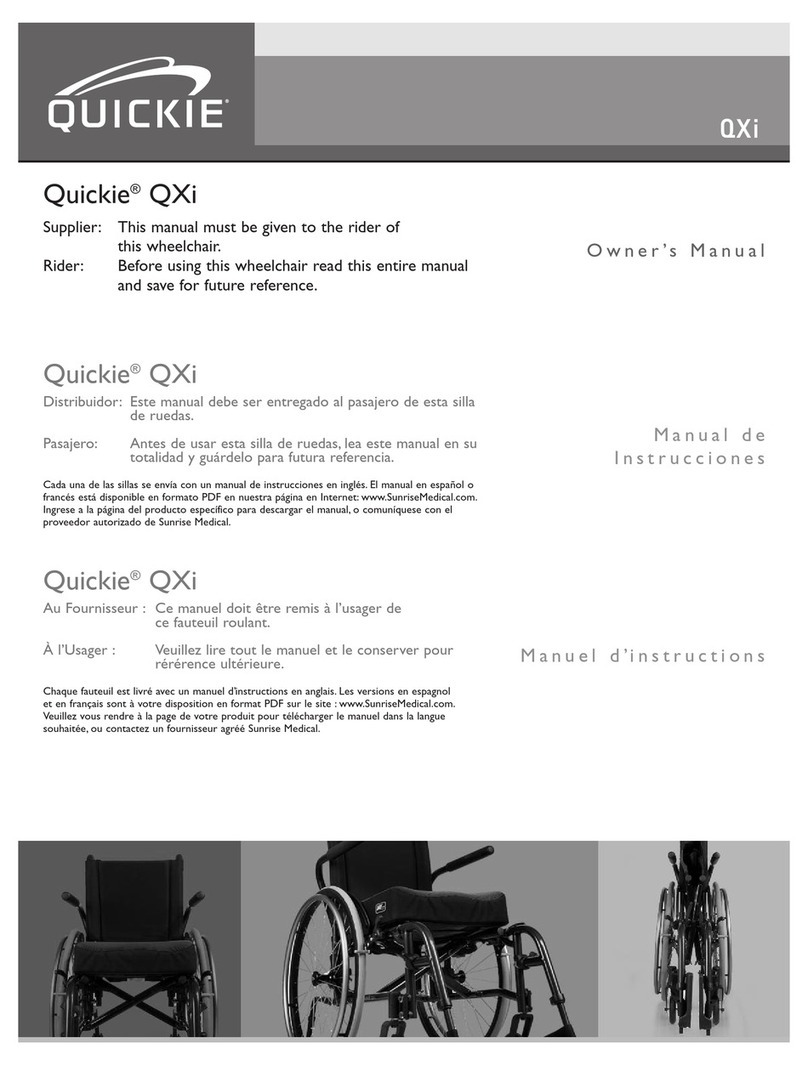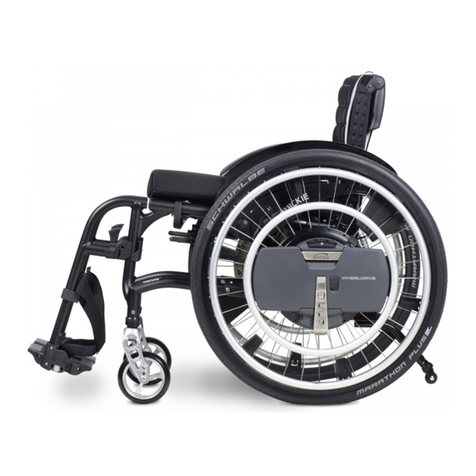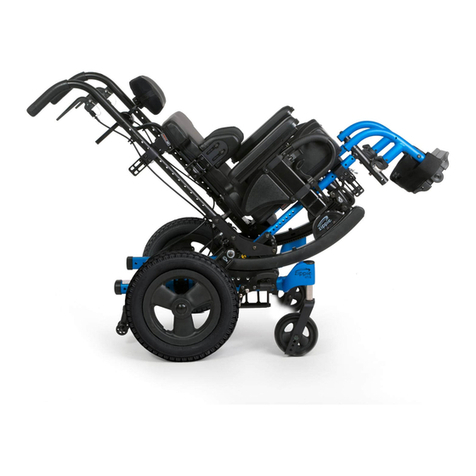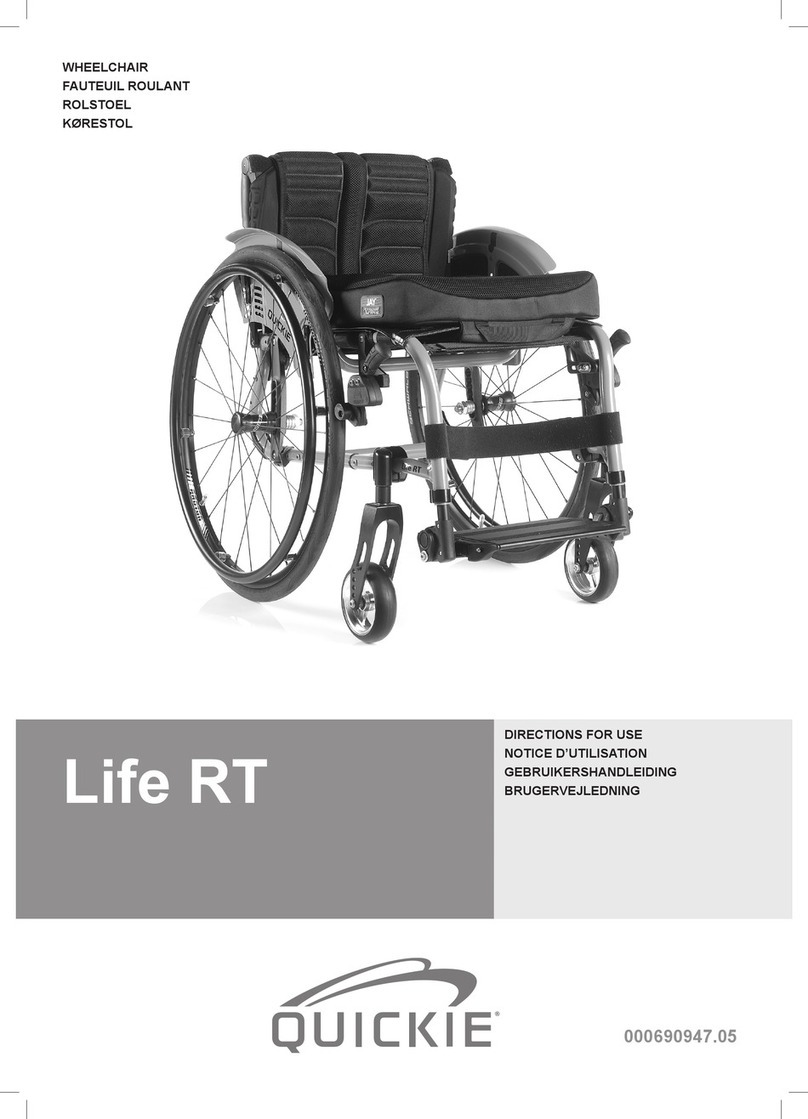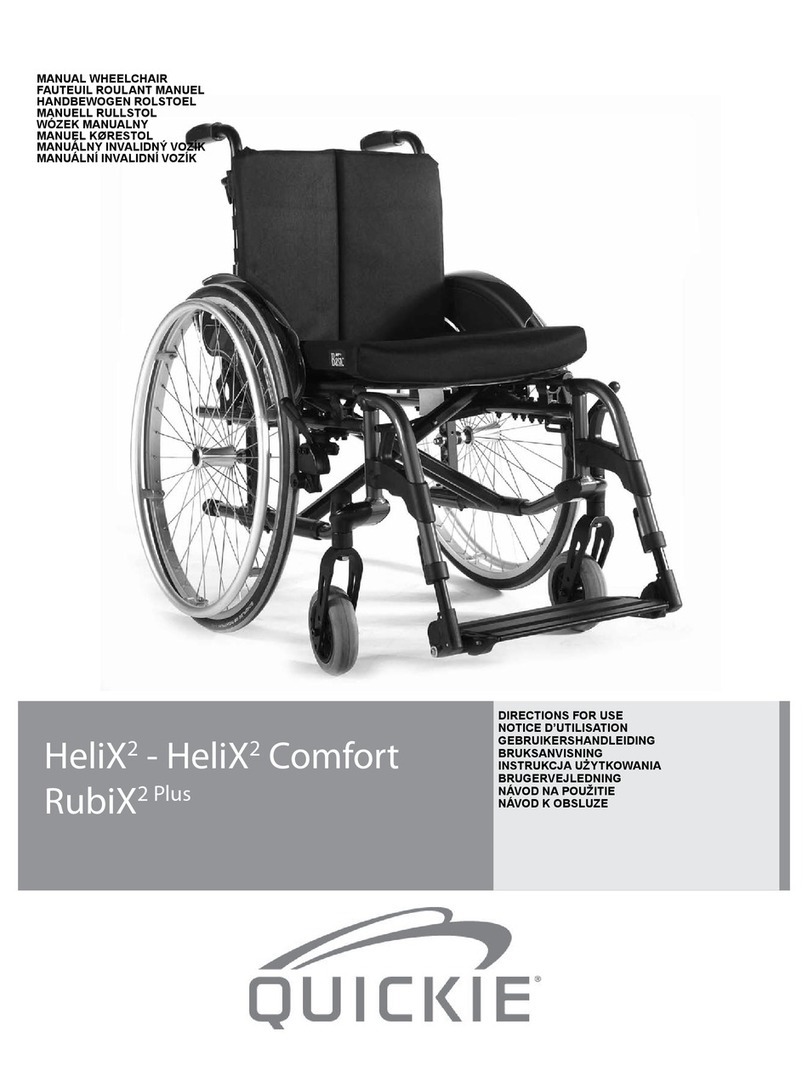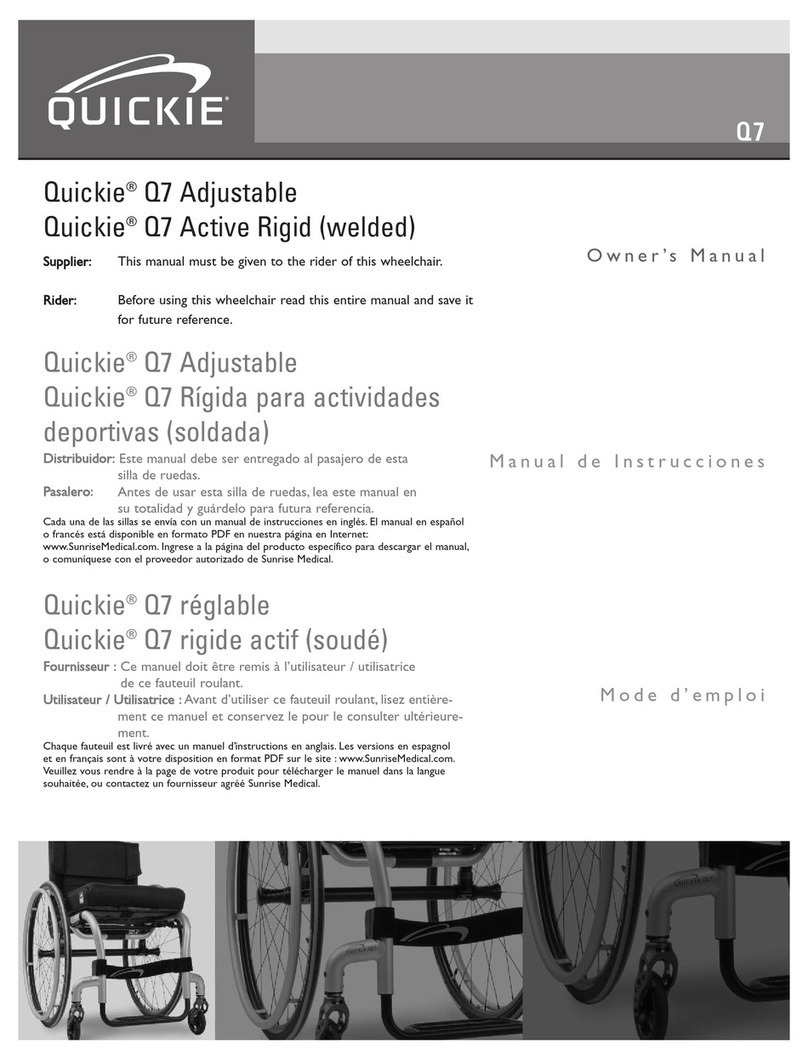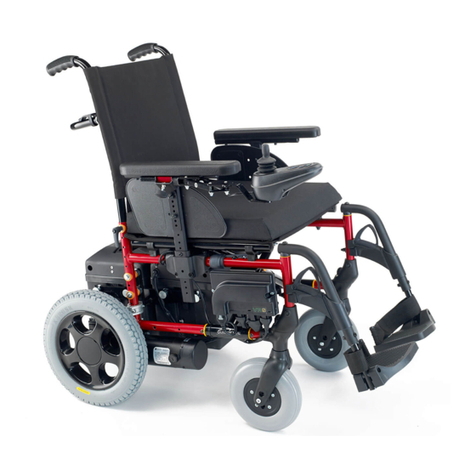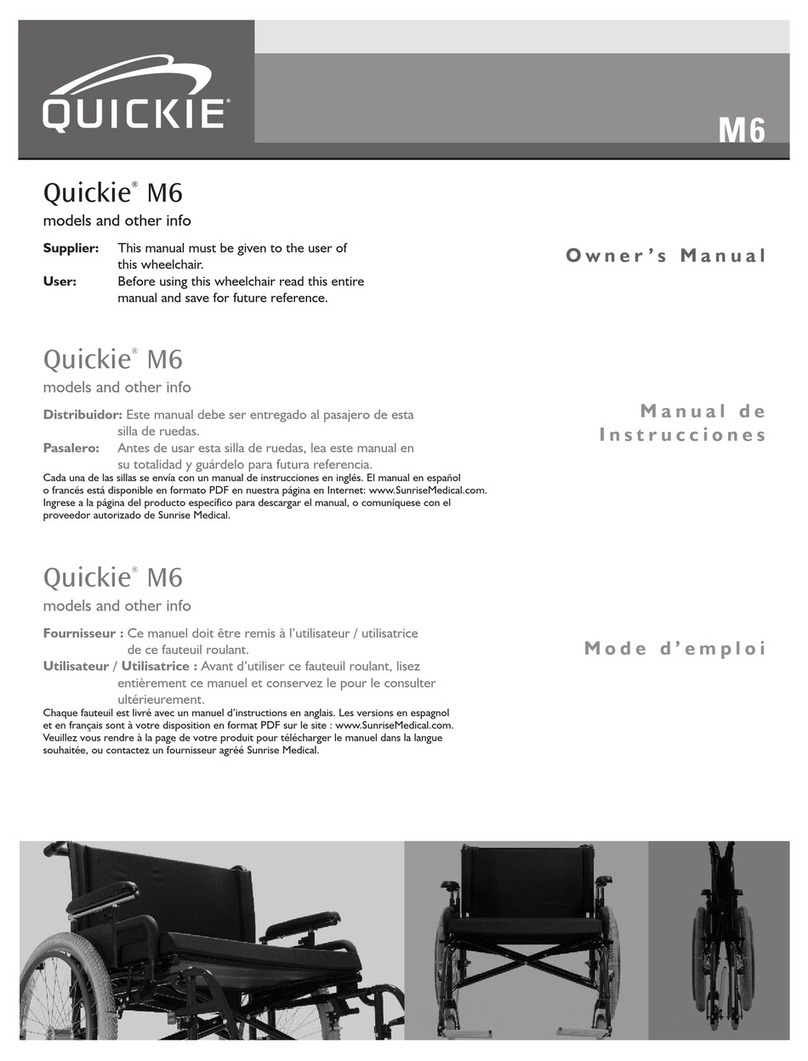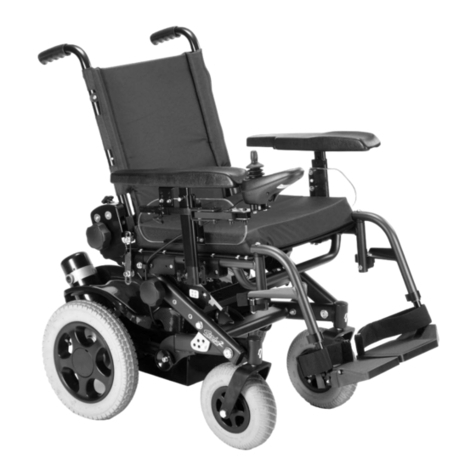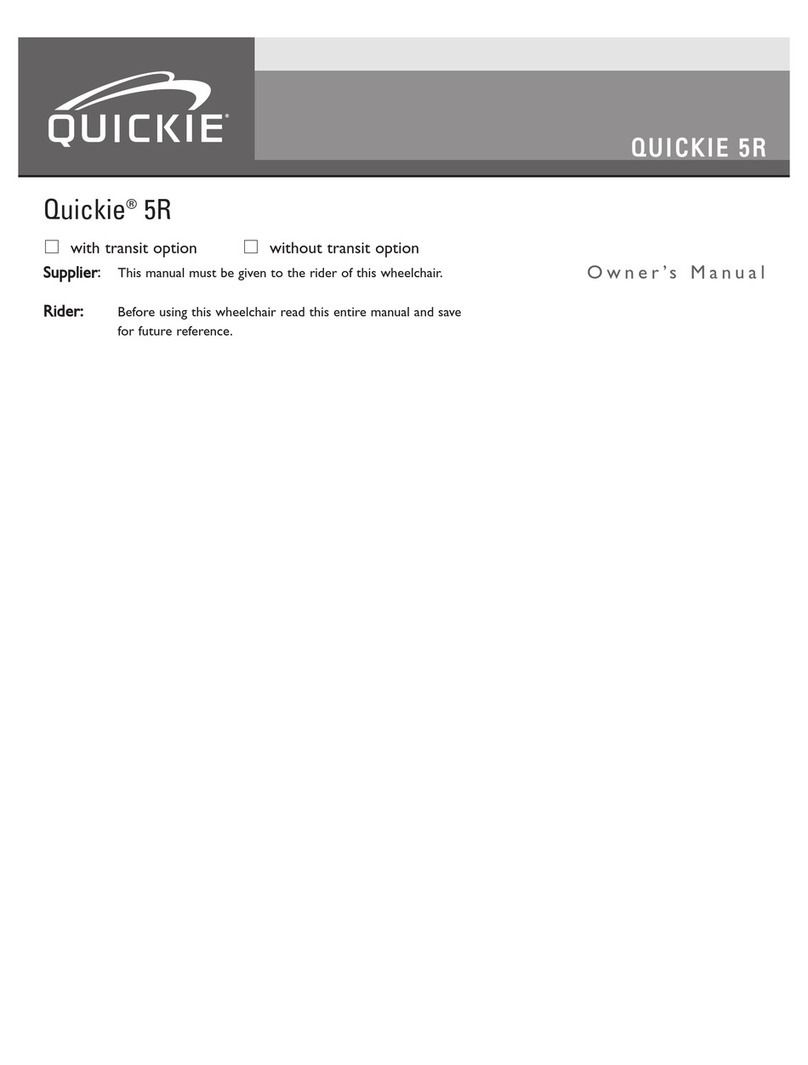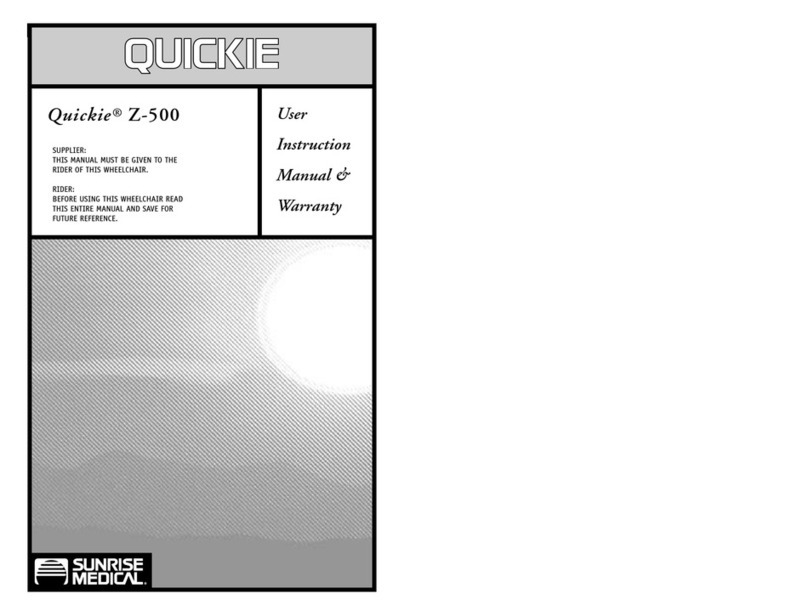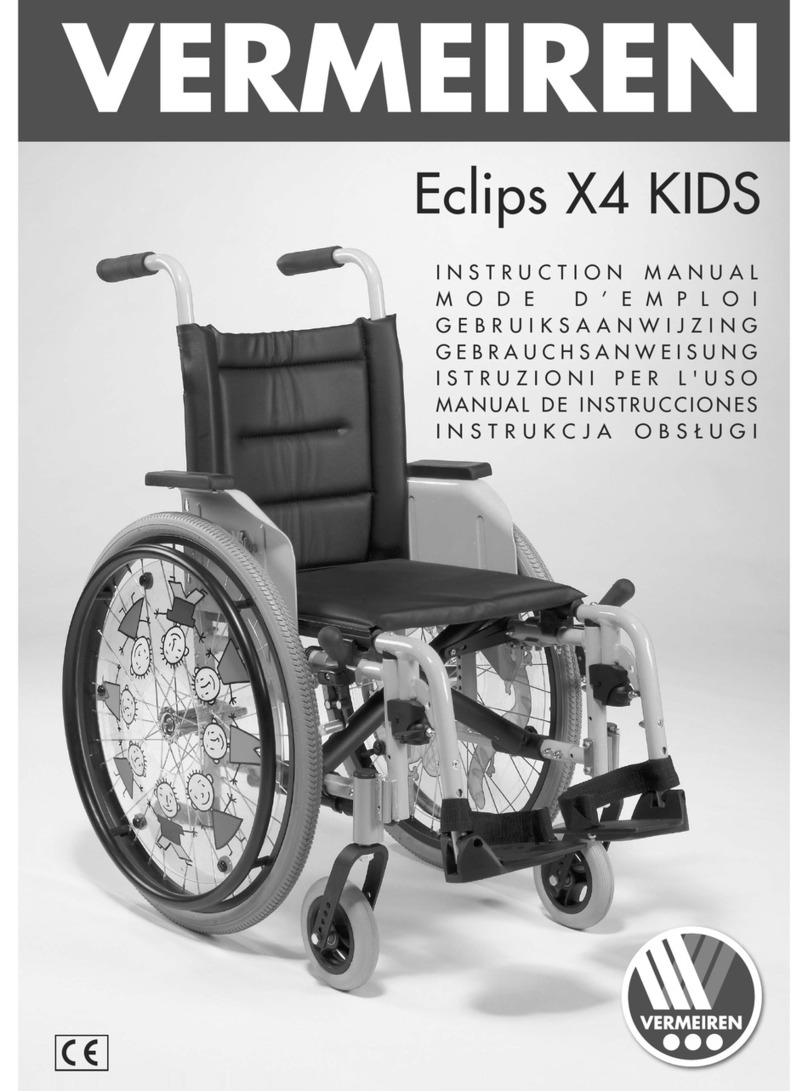
MK-100071 RevA
3
ENGLIS
II. TABLE OF CONTENTS
I. INTRODUCTION ............................................................... 2
II. TABLE OF CONTENTS ...................................................... 3
III. YOUR C AIR AND ITS PARTS ....................................... 4
IV. NOTICE - READ BEFORE USE ......................................... 4
V. GENERAL WARNINGS....................................................... 5
A.Weight Limits .................................................................... 5
B. Intended Use ..................................................................... 5
C.Attendants and Caregivers ............................................. 5
D. Accessories ........................................................................ 5
E. Know Your Chair .............................................................. 5
F. Reduce The Risk of an Accident ................................... 5
G.Safety Checklist ................................................................. 5
.Changes & Adjustments .................................................. 6
I. Environmental Conditions .............................................. 6
J. Terrain ................................................................................. 6
K. Street Use .......................................................................... 6
L. Motor Vehicle Safety ........................................................ 6
M.When You Need elp ..................................................... 7
VI. WARNINGS: FALLS AND TIP-OVERS ........................... 7
A.Center of Balance ............................................................ 7
B. Dressing or Changing Clothes ...................................... 7
C.Obstacles ............................................................................ 7
D. Front Caster Lift ............................................................... 7
E. Reaching or Leaning ......................................................... 8
F. Moving Backward ............................................................. 8
G.Escalators ........................................................................... 8
.Ramps, Slopes & Sidehills ................................................ 8
I. Transfers ............................................................................. 9
J. Curbs & Single Steps......................................................... 9
K. Climbing a Curb or Single step ..................................... 10
L. Descending a Curb or Single step ................................ 10
M.Stairs .................................................................................... 10
N.Climbing Stairs .................................................................. 10
O.Descending Stairs ............................................................. 10
VII. WARNINGS: COMPONENTS AND OPTIONS .......... 11
A. Anti-tip Tubes..................................................................... 11
B. Armrests ............................................................................. 11
C. Caster Pin Locks .............................................................. 11
D. Cushions and Seat Slings ................................................ 11
E. Fasteners.............................................................................. 11
F. Footrests.............................................................................. 11
G.Pneumatic Tires .................................................................. 11
.Positioning Belts Option .................................................. 12
I. Push handles Option......................................................... 12
J. Quick-Release Axles ......................................................... 12
K. Rear Wheels........................................................................ 12
L. Rear Wheel Locks ............................................................. 12
M.Modified Seat Systems...................................................... 12
N.Seat and Back Upholstery ............................................... 12
VIII. USE AND MAINTENANCE ............................................... 13
A.Introduction ........................................................................ 13
B. Critical Maintenance Tips ............................................... 13
C.Maintenance Chart............................................................ 13
D. Cleaning Tips ..................................................................... 13
E. Troubleshooting Chart..................................................... 13
F. To Mount and Remove Rear Wheels............................ 14
G.Wheel Locks ..................................................................... 14
.Anti-tips tubes .................................................................... 14
I. Armrests .............................................................................. 15
J. Padded Swing-away Armrests ......................................... 15
K. Footrests, Legrests & Footplates .................................. 16
L. Back Posts and integral Push handles .......................... 16
M.Seating and Seat Sling Upholstery ................................ 16
N Side Guards ........................................................................ 17
O.Folding and Unfolding ....................................................... 17
P. Storage Tips.......................................................................... 17
Q.Check-Out .......................................................................... 17
IX. DEALER SERVICE AND ADJUSTMENT ......................... 18
A.Dealer Service Introduction............................................ 18
B. Critical Maintenance Tips................................................. 18
C.Cleaning................................................................................ 18
D. Rear Axles &Axle Plates................................................... 18
E. Rear Wheel Axle Nut Adjustment................................. 19
F. Squaring the anti-tip tubes ............................................. 19
G.Wheel Locks....................................................................... 20
.Caster Forks ....................................................................... 20
I. Casters ................................................................................ 20
J. Anti-tip receivers ............................................................... 21
K. Armrest Receiver Attachment........................................ 22
L. Paddedd Swing-Away Armrests...................................... 22
M.Fixed Front Footrest Adjustment .................................. 23
N.Swing-in, Swing-out angers and Footrests ................ 23
O. Angle Adjustable Footplates........................................... 23
P. Platformand Auto-fold Footrests .................................. 23
Q.Backrest ............................................................................... 24
R. Angle adjustable Backrest................................................ 24
S. Backrest Tension Adjustable ............................................ 25
T. Removing Seat Rails .......................................................... 26
U.Seat Saddle Adjustment .................................................... 26
V. Sideguard ardware ........................................................ 26
X. SUNRISE LIMITED WARRANTY...................................... 27
